#me developing mnemonic devices
Explore tagged Tumblr posts
Text
ah yes the four biosafety levels:
1: if you get sick from this, you're a weapons-grade dumbass and it's almost impressive
2: you can get sick from this, but you'd still have to fuck something up seriously
3: honestly pretty risky, but with proper procedures, there's no reason to be scared
4: honestly, you should be scared
#me developing mnemonic devices#this also goes for reading those fire diamonds tbh#biosafety#biosecurity#microbiology#shitpost#science shitpost
5 notes
·
View notes
Text
Writing Notes: Acrostic
Acrostic poem - a type of poem where the first letter of each line (or each paragraph) forms a hidden message or word.
A fun way to craft an ode to your beloved or a sneaky form of dissent—public resignations by disgruntled officials are a particularly popular place to deploy one—acrostic poetry can be very simple and spare, or take a more understated form in full verse.
The word “acrostic” comes from the French acrostiche, descended from the Ancient Greek phrase meaning “highest, or topmost verse.” Acrostics (like their cousin, the acronym) can also be highly useful mnemonic devices.
How to Write an Acrostic Poem
Unlike other forms of poetry, there are no rules when it comes to rhyme or meter for acrostics, so writing one can be a relaxing kind of word puzzle. You may find that you develop a naturally consistent rhythm or line length as you make your way through.
To write your own acrostic, break apart a single word, so that the individual letters become the initial letters of their own respective lines (or, if you like, the last letters of each line).
Let the word you chose serve as the theme of the poem; get inspired by nature, like in haiku, or use the name of your best friend to extol upon their virtues.
You can also craft an acrostic by listing out the letters of the alphabet in order, a variation called an abecedarius. (An abecedarian sounds easy enough, but the real trick comes when you reach x.)
Examples of Acrostic Poems
Acrostics were incredibly popular in medieval literature, where the hidden words were tucked in as tributes to a wealthy patron or prayers to a saint. They even appeared in the original Hebrew of The Old Testament, popping up in psalms and proverbs.
Classical literary examples of acrostics include this unnamed ode to an Elizabeth from Edgar Allan Poe, written around 1829 and only discovered after his death:
Elizabeth it is in vain you say "Love not"—thou sayest it in so sweet a way: In vain those words from thee or L.E.L. Zantippe's talents had enforced so well: Ah! if that language from thy heart arise, Breath it less gently forth—and veil thine eyes. Endymion, recollect, when Luna tried To cure his love—was cured of all beside— His follie—pride—and passion—for he died.
Lewis Carroll often wrote acrostics for the neighboring Liddell girls, Lorina, Alice, and Edith, like this one from Christmas of 1861:
Little maidens, when you look On this little story-book, Reading with attentive eye Its enticing history, Never think that hours of play Are your only HOLIDAY.
And that in a HOUSE of joy Lessons serve but to annoy: If in any HOUSE you find Children of a gentle mind, Each the others pleasing ever.
Each the others vexing never- Daily work and pastime daily In their order taking gaily- Then be very sure that they Have a life of HOLIDAY.
And in his famous book, Through the Looking-Glass, Carrol’s ending chapter "A Boat, Beneath A Sunny Sky" is also an acrostic, featuring the full name of his main character’s namesake: Alice Pleasance Liddell.
A boat, beneath a sunny sky Lingering onward dreamily In an evening of July - Children three that nestle near, Eager eye and willing ear, Pleased a simple tale to hear - Long has paled that sunny sky: Echoes fade and memories die: Autumn frosts have slain July. Still she haunts me, phantomwise, Alice moving under skies Never seen by waking eyes. Children yet, the tale to hear, Eager eye and willing ear, Lovingly shall nestle near. In a Wonderland they lie, Dreaming as the days go by, Dreaming as the summers die: Ever drifting down the stream - Lingering in the golden gleam - Life, what is it but a dream?
Source ⚜ More: Writing Notes & References ⚜ Writing Resources PDFs
#acrostic#poetry#writeblr#literature#writers on tumblr#writing reference#dark academia#spilled ink#writing prompt#creative writing#writing tips#writing advice#light academia#writing inspiration#writing ideas#writing resources
71 notes
·
View notes
Text
The Itachi/Fuyumi (OC) fic has some fun worldbuilding I like. There's this little bit about mnemonic devices used to warn non-village ninja kids about others ninjas' bloodline limits? I like to think a lot of stuff like that develops in the informal systems and networks outside the villages.
This is naturally only revealed during absurd pillow talk, so I present that to you below for amusement:
(NSFW text under the cut, mentions pregnancy as something to be prevented.)
--
[Itachi's] eyes were very distant. "Perhaps." Then something seemed to occur to him, and he jolted amid the pile of pillows on Fuyumi's bed. "Contraceptives."
"I'm way ahead of you," said Fuyumi. "As cute as your eyes are —"
"Cute," he repeated, dubiously.
"— very cute. I love the spinny thing —"
'Spinny thing,' he mouthed.
"— I'm not interested in becoming broodmare to the most wanted baby in the elemental nations. I did the technique before we even got here."
"Nevertheless," he said, hard-voiced and without hesitating, "I want to watch you do it. Do it again."
Fuyumi frowned at him. He stared back.
"Er. That's okay I guess... But I don't know what happens if you do it twice. Can't be that bad though, right? People must get drunk and forget they've done it all the time?"
"That's not a common scenario among the general population," Itachi said. "Aren't you projecting your failings of character onto other people?"
Which just went to show, Fuyumi thought, that Itachi had spent his whole missing-nin-hood among some real freaks out there with the Akatsuki. In her experience, most missing-nin reeled from contract to contract and spent their downtime at bars, like normal people.
"You're so mean that sometimes it almost passes for actually having a sense of humour," she told him, bemused.
She let him watch her flick through the seals for the contraceptive technique and slap her palm on her belly. It wasn't a particularly advanced use of chakra. There were some killer contraceptive techniques out there, including one — based on field mice! — that could just kind of defer the implantation of a fertilised egg for six months, delaying the pregnancy. Fuyumi's mother knew that one, but she'd never had the control to get it right herself. She wouldn't have used it, anyway: she didn't want a baby, and she definitely didn't want an Uchiha baby.
Bloody oath, that'd be a nightmare.
Itachi watched her like a hawk, red eyes spinning their pretty pinwheels. Even when he wasn't trying to capture you with them, they were mesmerising to see in action.
"Happy?" she asked, watching them spin in lazy circles. They were so cool to watch. Dangerous, sure. But cool. "Hey, can you see, like, the jizz physically dying, or what?"
"No." He made an appalled face. She sensed he was — once again — speedrunning the stages of grief about the life choices that had brought him to her. "I can see the flow of chakra well enough to tell if you did it correctly," he said, and his eyes turned dark again. "Fuyumi-san, has nobody warned you not to stare directly into a sharingan?"
"Yeah. There's a whole mnemonic for doujutsu, you know. 'If you see red, he's in your head', 'if it's white, say goodnight'," she sing-songed dutifully. "There's like, I don't know, seven rhymes. But there's such a thing as risk assessment too. What are you gonna do? Kill me?" She wiggled her eyebrows. "Steal me away and have your wicked, wicked way with my pale quivering virgin flesh?"
"Place you under a genjutsu and use you as a scapegoat for my criminal activities," Itachi suggested, waaaay too fast for it to be an example selected at random. Then he paused.
In a tone that suggested he already regretted the asking, he asked: "Virgin?"
"Itachi-san! Are you suggesting I might not be a virgin? How inappropriate." She smacked her naked thigh into his. He didn't budge.
He blinked his dark eyes at her. Opened his mouth. Closed it.
"...Ridiculous," he muttered, and looked away, pink cheeked. Aww.
--
(the other Covenant Fic Excerpt is over here, if you missed it)
36 notes
·
View notes
Text
Neurodivergent Study Tips
A teacher at my school asked me if I had any study tips for other students with ADHD, Autism, Anxiety, ect. so I typed up a little list. Thought others might find it helpful as well! Sorry it's so long. This is just my experience, so they probably won't work for everyone, I would love it if everyone could add on there own things they do to stay focused.
Do you have something that you’re really obsessed with whether it be a piece of media, a video game, a book, a certain subject or a time period in history? Try to relate it to what you are learning!
-Use mnemonic devices related to your special interest or current thing you’re really into.. When I often need to memorize certain terms I like to make my mnemonic devices relate to the tv shows I like (ex. I needed to memorize the three main gunpowder empires so I used the term “Silly Oncologist Man” which reminded me of Wilson from House MD but the first letter of each word matches the name of each gunpowder empire; the Safavids, the Ottoman Empire, and the Mughal Empire.)
-Relate the things you like to what you are learning about. Find a way to tie in the things you enjoy into what you are learning about. For math and science this can be quite easy, especially when you are learning about motion and other things that can be applied easily to many scenarios (I turned all my equations on calculating the motion of an object into playing roller derby or throwing projectiles in dnd or video games I like) For me I often relate political movements in fictional TV shows to the part of American history or philosophy they most align with, I find that any TV shows with complex fictional governments or that explore certain themes and ideologies are good for this (I used the Battlestar Galactica Reboot for this, but you can really use anything that you’re interest in, even other parts of history, this can also help you develop a deeper understanding!)
-Find some way to fit something you like or what you’re interested in into your study routine. I often have the soundtracks of my favorite tv shows, movies or video games playing in the background as I study, or I often keep something that reminds me of the things I like nearby. (I like drinking coffee while studying because it helps me focus and reminds me of my favorite character Ianto from the tv show Torchwood, similarly I also have a scented candle I like that smells like the Sunnydale Library from Buffy the Vampire Slayer burning while I work)
Find ways to reward yourself for studying.
- Make a tangible final product. I often find that making a tangible product relating to what I’m learning or what I’m interested in can be quite helpful. For example, instead of just forcing myself to memorize all the neurotransmitters and parts of the brain for AP Psychology I made up a fake video game where each of the neurotransmitters was a member of an alien punk band and the parts of the brain were places they went on tour. I was able to make little skill trees for each of the neurotransmitters as their character leveled up relating to the effects of what would happen if you had too much or too little of that neurotransmitter, also allowing me to memorize the different causes of mental illnesses at the same time. At the end of this project not only did I have a little booklet and ton of sketches of my neurotransmitter characters, as well as many accompanying pinterests boards but I also memorized all the terms I needed to know, often in far more depth than my classmates because I would look up additional information to complete my project. Plus if you have something you can take with you outside of school and show to other people it often leaves you feeling much more fulfilled.
-Use Technology I use a lot of study and task tracking apps to motivate myself to study. My favorites are the ones that tie you studying to taking care of some kind of virtual pet or gaining in game items. My favorites are Study Bunny which allows to gain coins every time you study to better take care of your virtual bunny, Finch which is more of a self care app but you can also use to set goals for the day to take care of your virtual pet bird, Focus Traveller which also lets you make soundscapes and travel a mountain by studying more, Habitica a fantasy themed task managing app where you get coins and equipments for completing tasks and Hatch where you get to hatch alien creatures for studying. You can also use rewards not tied to an app but tied to something you like to do or something that you are interested in, but I also just like the apps.
-Make your place to study actually fun to be in. I know this can be a lot harder for some people depending on if you actually have your own space at home. But you can even bring a cute action figure or good luck charm to put with you while you study, or just find a place in your school where you like to be (I have a favorite spot in my school library where I love to sit in for studying.) Your environment could also include playing the kind of music you like while studying or creating a special soundscape with calming sounds like rain or birds. I also often like lighting a scented candle or incense while I work because I really like good smelling things and it makes me happy to be at my desk. I also just have fun stickers on my laptop and a cute computer mouse that has just the best texture, making me happy to work.
Find ways to prevent yourself from leaving your desk or stopping the task you are doing.
Create a reason why you can’t leave your study space or stop your task. For this I often like to light a scented candle because I can’t leave an open flame unattended for more than a few minutes because my cat Gus has a death wish. So because I don’t want to waste matches I often find myself staying put and continuing to work as opposed to getting up and wandering the house to go bother the rest of my family. You can also use an app like Study Bunny or Hatch that sets a timer for how long you need to stay put.
Incorporate movement into your studying. I am often very very fidgety and find myself often leaving my desk to wander around the house if I haven’t moved for long enough. Instead I have started pacing while reading my textbooks or using a fidget while studying so I can still get some movement in. My mom has a little mini elliptical thing she keeps under her desk which she finds very helpful as well, though that can be a bit expensive.
Limit technology based distractions. Apps like Study Bunny or Hatch will stop you from accessing the rest of your phone without losing your progress, which can stop you from getting distracted and texting your friends or scrolling social media. I also have the software Virtual Cabin which not only makes it feel like you are studying in a cozy cabin with a cute cat/dog and nice music/nature sounds but also blocks the rest of your computer from view, keeping yourself focused on whatever you are doing. Frankly I just find myself trying to do assignments on paper/analog as much as I can because it eliminates the temptation of me switching out of what I am doing and looking at something else on my computer.
Find ways to hold yourself accountable. I often find that telling someone that I am going to do homework before I do it can be helpful. I even sometimes tell them what assignments I am doing so they can check in to see if I actually did them, though I often find this a bit stressful. My best suggestion is to find someone who understands how your brain works so they won’t shame you if it gets in the way of you doing work and they can even help come up with new strategies for working more effectively. For example I often tell my penpal that I am doing homework because they believe in me but they also have issues focusing and staying calm sometimes so they understand if sometimes that stuff gets in the way. You can also just sit with someone very quietly and work next to them this is called “body doubling” and I find that if I am working while someone else is working I feel more motivated to work and less likely to go through social media, because frankly I don’t want them to see the weird crap that I google when I’m trying to avoid doing homework (way too many questions about the lore surrounding video games I’ve never played and have no intention to play, and many weird questions for my various creative writing projects.)
#adhd#studying#studyblr#autism#school#high school#university#house md#torchwood#actually autistic#neurodivergent#study tips
53 notes
·
View notes
Text

learning style and my personal connection
Everyone has their own learning style, and mine is our own learning style. My learning style is visual and kinesthetic. The visual style is easy to show through graphs, charts and images. visual learning style is Some common learning styles include visual, auditory, kinesthetic, and reading/writing. I find visual and kinesthetic learning styles particularly interesting because they engage multiple senses and facilitate a deeper understanding of the material .
example i am cooking something It is far simpler to follow a recipe with photos than it is to simply read the directions. You can easily a get a recipe
at the same time kinesthetic Learning style dance moves requires you to physically move your body and coordinate different parts of your body. This helps you develop a sense of rhythm and spatial awareness.
example you are creating adance or movement sequence that represents the movements of the planets and their relationships to the sun.
Although these learning types work well for me, I am aware that my partner's other learning styles—like auditory learning—also work well for other people. Some people learn best through mnemonic devices, debates, or lecture listening. When combined with my primary learning modes, such as watching recorded lessons and going over visual notes, I find auditory learning to be successful.
https://steadfastacademy.com/understanding-the-visual-auditory-and-kinesthetic-learning-styles/
0 notes
Text
Unlock The Power Of Your Mind With Memory And Concentration Training!
In today's fast-paced world, the ability to focus and remember information is more crucial than ever. Often parents ask questions like, "My child keeps losing concentration. Why does he?" or "My child forgets things, especially crucial facts for school." It's not uncommon, as attention is one of those difficulties that many kids face - especially with the distractions we can get so easily these days. Luckily, training memory and concentration may unlock new doors for boosting cognitive abilities, and searching for a brain training program in your vicinity might be what you are looking for.
Memory and Concentration Problems for Kids
Kids are commonly confronted with issues associated with memory and concentration that sometimes lead to challenges in school or at home. If you often hear your child say, "I don't know how to focus," you should realize that there is a problem, and this can be due to a number of reasons, such as stress, environment, or even some conditions like dyslexia. Dyslexic children and children who have reading struggles & dyslexia often get frustrated easily because they have problems focusing, which affects their school performance.
Training Memory and Concentration
The training in memory and concentration is strategic and tailored for enhancing cognitive ability. This type of program will help children to focus, retain more, and absorb more information as they do their assignments and generally improve in school.
1. Improves Focus: Training programs that use interactive activities encourage children to focus longer. Techniques are learned to disregard distractions and stay focused on the task, such as reading comprehension, homework, or simply getting things done.
2. Improves Memory Retention: Memory training exercises, such as memory games and mnemonic devices, can significantly enhance your child's ability to recall information. This is especially helpful in educational settings where retaining facts and figures is crucial for success.
3. Builds Self-Confidence: With children improving their concentration and memory, there is an increase in their self-esteem. When children master challenging tasks, it gives them a feeling of accomplishment and encourages them to tackle more challenges without fear of failure.
4. Reduces Anxiety: Children who struggle with focus and memory often feel overwhelmed or anxious, particularly during tests or when faced with a pile of homework. Training can help mitigate these feelings, providing them with tools to manage their workload confidently.
Finding the Right Program
When searching for a brain training program near me, consider these essential factors:
- Research: Research programs that focus on memory and concentration issues, especially on programs that are specifically developed for children who struggle to read and have dyslexia. Read reviews and testimonials on how effective the program can be.
- Experienced Instructors: Make sure that the program has experience instructors who are aware of the different cognitive problems and can adapt their approach based on your child's requirements.
- Engagement: Children learn best in environments that inspire creativity and engagement. Look for programs that incorporate fun activities and hands-on experiences.
- Trial Sessions: Many programs offer introductory sessions or trials. Consider enrolling your child in one of these to see if it's a good fit before committing long-term.
Unlocking the power of your mind through memory and concentration training holds the potential to transform your child's educational experience. By investing in their cognitive development, you're equipping them with the necessary skills to overcome challenges related to focus and memory, leading to lifelong benefits both academically and personally.Don't let the future be defined by the worry of "my child forgets can't remember" or my child does not focus or pay attention" Take the proactive step to find a brain training program near you, and watch them blossom into more attentive and capable learners. With the right support, every child can unlock the vast potential of their mind and pave the way for success in their journey of learning!
#reading struggles & dyslexia#brain training program near me#my child forgets can't remember#my child does not focus or pay attention
0 notes
Text
Struggling with math? Find a reliable and experienced math tutor near you to boost your understanding and confidence
Are you struggling with math and struggling to keep up with your classes? Whether it's algebra, geometry, calculus, or any other branch of mathematics, feeling overwhelmed by math is a common experience for many students. The good news is that there is a reliable solution to help you boost your understanding and confidence in math – finding a reliable and experienced math tutor near me.
Finding the best math tutoring can make all the difference in your math journey. From after-school math classes to personalized one-on-one tutoring, various options are available to suit your learning style and schedule. If you're based in Sharjah, you're in luck because there are plenty of qualified math tutors in Sharjah who can provide the support and guidance you need to excel in math.
One of the key benefits of seeking out a math tutor near you is the personalized attention and tailored approach to learning. Unlike a busy classroom setting where the teacher's time is divided among many students, a math tutor can focus solely on your individual needs. This allows for a deeper understanding of the concepts, targeted practice, and the opportunity to ask questions without hesitation.
Moreover, the best math tutoring goes beyond just helping you with homework or exam preparation. A committed math tutor will collaborate with you to determine your areas of strength and weakness, focus on those that require development, and create a personalized learning plan to address those areas. This personalized approach can significantly boost your understanding of mathematical concepts and improve your grades.
Whether you're struggling with basic arithmetic or advanced calculus, a skilled math tutor can provide the clarity and guidance you need to overcome your challenges. They can simplify and make difficult ideas easier to understand and apply by breaking them down into smaller, more doable steps. A math tutor can also offer valuable tips, tricks, and mnemonic devices to help you remember key formulas and principles more effectively.
For many students, seeking help outside of the classroom can be intimidating. On the other hand, locating a trustworthy maths tutor in your area can significantly impact your academic performance. Your confidence and attitude will both increase and your maths skills will improve with the help of the right maths tutor. Overcoming your arithmetic difficulties can provide you a newfound sense of empowerment and enthusiasm for learning.
When searching for a math tutor in Sharjah, it's essential to consider the qualifications and experience of potential tutors. Seek out tutors who have a proven track record of assisting students in developing their maths skills, a strong background in mathematics, and relevant teaching experience. You can also look into internet resources that pair students with experienced tutors, or ask friends, family, or teachers for recommendations.
In conclusion, if you struggle with math, don't hesitate to seek the best math tutoring available. Whether through after-school math classes or personalized one-on-one sessions, finding a reliable and experienced math tutor near you can help boost your understanding and confidence in math. With the right support and guidance, you can overcome your math struggles and unlock your full potential in this critical subject.
#math test prep in dubai#after-school math help#math lessons in sharjah#sat math help in uae#math help in uae#after-school math classes#best math classes in uae#best math tutors in uae#math coaching uae#math tutor abu dhabi
0 notes
Text
“How can we best promote world peace? As always, Thomas Friedman has a stunningly original answer: by building more McDonald’s. Here’s Friedman’s “Golden Arches Theory of Conflict Prevention” from his new book The Lexus and the Olive Tree:
…[A]s I Quarter-Poundered my way around the world in recent years, I began to notice something intriguing. I don’t know when the insight struck me. It was a bolt out of the blue…. And it was this:
No two countries that both had McDonald’s had fought a war against each other since each got its McDonald’s.
That’s what passes for an insight, in what passes for the mind of Thomas Friedman. Please note that this man is the possessor of what he himself calls “the best job in the world”: Foreign Correspondent for the New York Times. He is paid a huge salary to Quarter-Pound his way around the world producing “insights” like this. That’s the most interesting aspect of the whole Friedman phenomenon: not that Friedman is a bear of very little brain (because after all, there are a lot of Poohs in the woods) but that this Pooh is a leading writer for America’s newspaper of record.
Why would a hegemonic world power hire an outright halfwit as spokesman?
The very stupidity of Friedman’s analyses must somehow serve the Empire’s purposes. Once you admit this possibility, you can see that it fits an historical pattern. Again and again, the truly powerful Empires hire mediocrities; it’s the marginal empires which generate the great sloganeers – Mao, for example. Whatever else may be said about him, Mao came up with some great lines, from “paper tiger” to “Let a hundred flowers bloom.” When those five-million-strong crowds chanted in Tienanmen, they were quoting some first-rate poetry. That little red book they waved enclosed some of the best lines of the century.
Friedman, slogan kommissar of a much stronger Empire, couldn’t get drunken Manchester United fans chanting. Consider his use of numbers. This was one of Mao’s favorite mnemonic devices; “Smash the four olds!” “Destroy the Seventh Snake!” All Friedman has to offer is “The Three Democratizations” – but Friedman’s three D’s are so uninspiring that two days after finishing his book, I can only name two of them. If this guy was working for the Chinese Propaganda Ministry, he’d soon find himself collecting glowing camel-dung in the most radioactive districts of Sinkiang.
But the US, like nineteenth-century Britain, is so strong that it doesn’t want talented poets working for it. Think of the intentionally flat slogans of the British Empire:
“England expects every man to do his duty.” “The battle of Waterloo was won on the playing fields of Eton.”
Dull lines – meant to be dull. The British, in their glory days, revelled in their dullness, associating real poetry with women, the French, and other lesser species. There was an element of gloating in the very dullness of their slogans: let the conquered know that they are ruled by mediocrities.
The slogans Friedman develops in this book have the same triumphant dullness. Their purpose is not to inspire Americans, but to convince everyone else that there’s no way to stop “Globalization-Americanization” (his term). Take his favorite oxymoron, “The Golden Straitjacket,” his name for the state-model created by Thatcher and Reagan. It’s “Golden” because if you implement it, your country will supposedly get rich. It’s a “Straitjacket” because, as Friedman says over and over again, it takes away all your freedom. He compares this straitjacket to the Mao suit, evoking those grey-clad crowds in the great Tienanmin Square rallies:
‘The Golden Straitjacket is the defining garment of this globalization era. The Cold War had the Mao suit, the Nehru jacket, the Russian fur [sic]. Globalization has only the Golden Straitjacket. If your country has not been fitted for one, it will be soon.”
Friedman comes up with dozens of glib, sloppy metaphors implying that there is no way out of “globalization-Americanization,” and that anyone who tries to resist will be stampeded. He refers to the wired-up leaders of the movement as “the Electronic herd,” which tramples anything in its way. He takes the cattle-herd metaphor further, dividing the wired American elite into “long-horn” and “short-horn” cattle, and adds that the herd is served by the “bloodhounds” of financial-rating services like Moody’s.
Friedman doesn’t seem to know that cattle herds aren’t usually guided by bloodhounds. But the clumsiness of his metaphors is part of his job. He’s here to threaten those who seem reluctant to join the herd. Who wants subtlety from a leg-breaker? The cruder the metaphor, the more frightening. Good poets don’t make good goons. And Friedman is pure goon, brass-knuckled platitudes all the way. Like a Naked Gun voiceover, he lets his violent metaphors stampede where they will. One of the most ham-handed metaphorical panics is what happens to this “electronic herd.” Within pages of its introduction, the “herd” is transformed from cattle to wildebeest, grazing the Savannah. Ah, but that’s only the beginning. You have to read it to believe it, so take a deep breath and follow Mr. Friedman into the Serengeti of international finance:
Think of the Electronic Herd as being like a herd of wildebeests grazing over a wide area of Africa. When a wildebeest on the edge of the herd sees something move in the tall, thick brush next to where it’s feeding, that wildebeest doesn’t say to the wildebeest next to it, “Gosh, I wonder if there’s a lion moving around there in the brush.” No way. That wildebeest just starts a stampede, and these wildebeests don’t stampede for a mere hundred yards. They stampede to the next country and crush everything in their path. So how do you protect your country from this? Answer: You cut the grass, and clear away the brush, so that the next time the wildebeest sees something rustle in the grass it thinks, “No problem, I see what it is. It’s just a bunny rabbit.” […] What transparency does is get more information to the wildebeests faster, so whatever they want to do to save their skins they can do in an orderly manner. In the world of finance this can mean the difference between having your market take a little dip and having it nosedive into sustained losses that take months or years to recover from.
Is he TRYING to be ridiculous here? I don’t think so. Friedman is a perfect spokes-beest for the entire herd. His endless Mister-Ed monologues comfort the other ruminants, reminding them of their hegemony.
But that doesn’t make for great Imperial poetry. In fact, by the end of that paragraph, with its African bunny rabbits, transparent wildebeest and brush-clearance program, poor old Mao is banging his head against the coffin-lid. Mao’s corpse is praying to Marx, Stalin, and Kwan-Yin for one day back on Earth, just time enough to liquidate this Friedman, whose hack-work shames ideological poets everywhere. In fact, seismologists detect widespread vibrations as Imperial poets from Virgil to Kipling batter their coffin-lids, screaming in agony, as Friedman drones on.
But there are horses for courses, and this garrulous Mister Ed is perfect as mouthpiece of the gloating, swaggering American Empire in its moment of triumph. Because Friedman’s not just dumb; he’s mean, too. He just loves to tell those about to undergo “Globalization-Americanization” that the process is going to hurt:
Unfortunately, the Golden Straitjacket is pretty much ‘one size fits all.’ So it pinches certain groups, squeezes others….It is not always pretty or gentle or comfortable. But it’s here and it’s the only model on the rack this historical season.
But of course he has to offer something which passes for evidence. So, to fill the time between “insights,” he recounts inspirational anecdotes gleaned from lickspittles and Uncle Toms the world over. Friedman meets the son of a leading PLO general, and is gratified that the boy is now working as a software salesman with no hard feelings over the fact that his father took a hundred bullets from an Israeli hit team. He is told by Anatoly Chubais, that herd bull of the Russian Young Wildebeest herd, that it’s Russia’s own fault entirely that the country is in ruins.
Russia, in fact, is the villain of this book. Friedman hates Russia – truly hates it, with a mealy-mouthed venom which does not make pleasant reading. His book begins with a quote from an American businessman whining that it’s “aggravating” that the Russian crash actually affects his profits. When he needs a bad example, it’s always Russian. He tells the hoary anecdote (an “insight” in this case, naturally) about the Russian elevator with misnumbered floors, and the equally venerable anecdote about the Russian who drives his tank to town because he doesn’t have a car. Oh, those funny, funny Russians, with their aggravating habit of starving to death just when we want to celebrate. Like many of the Empire’s leg-breakers, Friedman hates Russia for all sorts of reasons: as a child of cold-war America; as an Israel-can-do-no-wrong Middle-East correspondent; and above all as a popularizer of the get-with-the-program hegemony of the Golden Straitjacket. Russia doesn’t fit into the Golden Straitjacket very well. In fact, the Straitjacket made Russia so uncomfortable that by 1998, its screams were audible even in the offices of the New York Times. Friedman and his masters will never forgive Russia for ruining the gloat-fest with that discordant scream.”
- John Dolan, “THOMAS FRIEDMAN: THE EMPIRE’S USEFUL IDIOT: AN EXILE CLASSIC.” The eXiled. June 8, 2000. Issue 92.
#john dolan#thomas friedman#the lexus and the olive tree#american empire#ideology of empire#foreign correspondent#new york times#pundit class
6 notes
·
View notes
Text
Otome game routes
*Games with asterisks are ones I haven't finished playing (e.g. demo, discontinued, or episodic release)
Cinderella Phenomenon: Karma's, with Walt's as a close second. Karma is adorable. I got Karma's route first and even after trying out everybody's, I still like Karma's route. As for Waltz, it was also a good route but I feel like most of the drama happened in the backstory than the present. I still like him, though, so his route's second.
Doppelganger Dawn of the Inverted Souls: I'm not really sure. It was the first VN I've ever played so it's been a long time. I remember getting Lee's route first (mostly because I thought sticking with your best friend was the safest). Every other route was enjoyable (I unlocked all of the endings to Lee's route so it really made me dislike him). Clifford's was pretty wholesome for the most part. Blake's was chill and refreshing. Raphael's route wasn't my type but it did reveal some interesting backstory. Yuri's was the most action-packed, and most dramatic second only to Lee's. I guess I'll go with Neo's route since it has the most backstory and Lucia's character development. He's awesome objectively, but I felt drawn to Yuri the most.
Autumn's Journey: Ilmari's. Kerr grew on me and my previous self would've liked him first, but I like how Ilmari's just so interested in the heavenkind world. Then again, the thing with a close-knit trio is that it feels wrong to have a couple somehow, IDK.
The Pirate Mermaid*: The sorcerer's, obviously. Don't you wanna tease that guy?
Nova Synthesis Creaturum: Duran's. There's something about short sulky messy-haired boy-next-door types.
Reimei no Gauken*: Sin's, probably. It has the most chemistry, imo. MC who sits on the edge of a high veranda and frequently escapes responsibilities plus an asocial guy who's drawn to her for an inexplicable reason. Both mysterious individually, an even greater mystery if they end up together. Lagi's someone I wish was real and his power really make for a complex dynamic, but for me it doesn't go with my first impression of the MC's personality. Hiryuu's admirable, but I think I'd go for him if I was playing a more realistic, less fantastical game. Aito's also bound to raise an interesting route being human and I would want to protect him, just not romantically. Osamu might have chemistry with the MC, but I don't like him. Lastly, Fraser's character design is awesome, but I don't know enough about him from what I've played.
Candied Carols*: Dietrich's. It's not even a bad guy turning good or an abusive guy playing nice. It's just an admirable human...I mean, rat being.
When the Night Comes*: August's. I didn't expect to be attracted to an authority figure or even a co-worker, but the boss it is. The theme background music kills me, too. Runner-up routes would be Alkar and Omen (individually or both) but a far second.
Cute Demon Crashers: Akki's. Orias' is a far second. I like the dynamics with Akki as a whole. Orias is definitely awesome, but feels like from a different world.
The Pretenders Guild: Rafael's. Even his theme background music kills me.
Mnemonic Devices: Alto's. I mean. *gestures wildly*
Arena Circus*: I respect the devs' decisions but I was hoping for a Fenris route, if not a Lucy or Santana one. I'm kinda hoping for my heart to be broken knowing my ships won't be together as often as a ringmaster and their harlequin, or even Lilié X Natalia.
Reanimation Scheme*: Sebastien's or Aldrias'. Originally there were only 3 routes, but fans recognized Sebastien's appeal.
Andromeda Six*: Damon's for sure. I didn't even try to get his route, my choices just clicked with him. I got his route first, which kinda sucks because the others ended up paling in comparison. Bash's would've been a far second, but I don't wanna get in between him and someone else (weird cuz I'm definitely between Damon and someone else).
5 notes
·
View notes
Text
Spatial Design III
Field Conditions by Stan Allen in Points + Lines, 1985 Field Condition article written by Stan Allen lectures about the experience and representing of space. Field condition is more about the development, experience, and portrayal of space and how we deal with space. While trying to extend our general translation of engineering thoughts, its emphasis is on a variety of undertakings by both craftsmen and designers that reclassify the connections amongst imperceptible and unmistakable, figure and ground, limited and endless. Stan Allen mention in his essay about “the convention of classic architecture dictate not only the proportion of individual elements but also the relationship between individual elements”. In this text, the writer talks more about the relationship between respective elements in space. This idea of respecting relationship between individual elements in a space relates to our spatial project. This semester I wanted to explore the relationship between humans and the atmosphere that surrounds us. I wanted to design a walkway with some design ideas inspired by Filipe Tohi. Filipe Tohi based his work and idea around Pacific Island art form of lalava(lashing) that was used for joining and binding materials together. Meters of colored sennit(kafa) were wound and tied so as to create distinct geometric patterns that were a well -established part of daily life. I believe lalava patterns were a mnemonic device for representing a life philosophy.
Site Visit






What is the importance of colours in relation to the Architectural World?
Numerous hypothetical research work in various orders of learning have managed the subject of colour, its properties, frameworks, and connections. Colour is significantly more than just a layer of paint on a surface, or an instrument of enhancement. It is a fundamental component of plan, and the most expressive, by the importance it passes on, and the mental consequences for the watchers. Colour is a basic component of our reality in the regular habitat as well as in the architectural enviroment. Colour constantly assumed a job in the human transformative process. The earth and its colours are seen, and the cerebrum procedures and judges what it sees on a goal and emotional premise. Mental impact, correspondence, data, and consequences for the mind are parts of our perceptual judgment forms. Subsequently, the objectives of shading outline in a design space are not consigned to embellishment alone.
For this Semester, I want my design to reflect the idea of Colour Complex and relationship between spatial practices and colour, colour as integral to materials, applied to materials, embedded into materials and colour as immaterial.
One of the readings called “Importance of Colour in Interior Architectural Space on the Creation of Brand Identity”, Alnasser addresses the theoretical study behind the idea of colour in relationship between spatial practices. Colour is firmly identified with frame and might be one of its essential properties. Much the same as structures what's more, shapes have their own measurements and measures, hues additionally have their measurements also, physical properties, which will be managed in this work to investigate the likelihood of essentially applying them as indicated by specific specializations. Distinctive hues communicate with one another on logical, basic, and creative bases, as they have their claim frameworks and connections. (Alnasser2013)
Artist Model Filipe Tohi
Examples of Filipe Tohi’s work

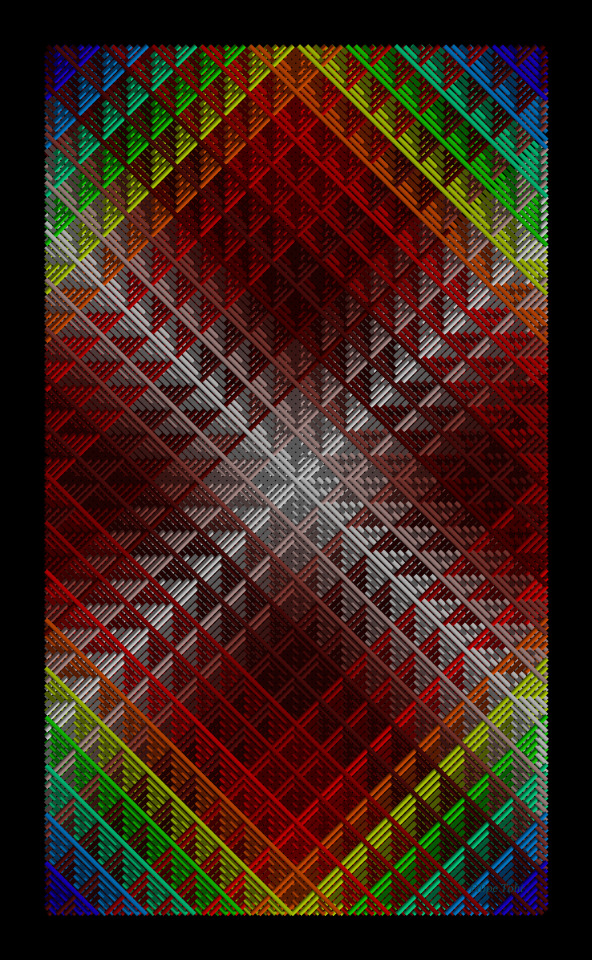
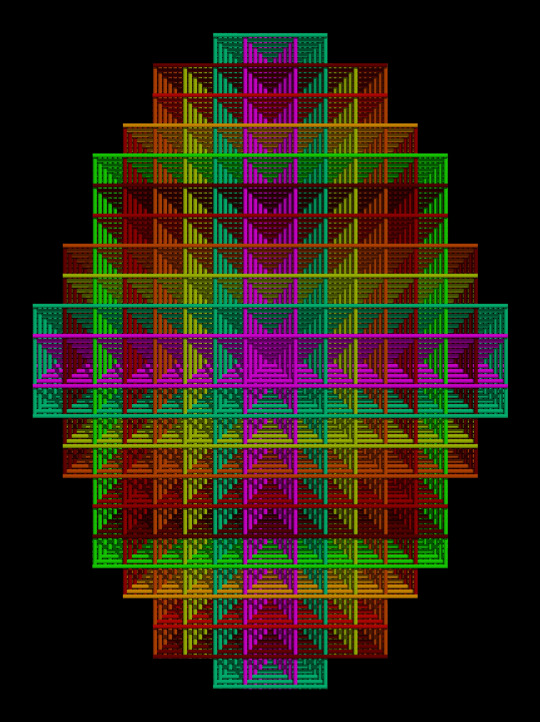
Filipe Tohi is also known for his sculptures, Tohi defines lalava as the ‘intersection of two strings that form patterns as they spiral up and down. Without both strings (lines) there are no patterns, both must go together’ Looking at these designs one finds a balance that can be equated with male and female; the lalava becomes a metaphor for the ways people and cultures interact. It is this notion of balance — of the interaction of two entities that so intrigues Tohi. He has attempted to demonstrate this in his models of the lalava designs. Expanding the patterns into three dimensions allows the viewer to see the geometric nature of the patterns, and more importantly to see them from multiple perspectives. Sculptures by Filipe Tohi
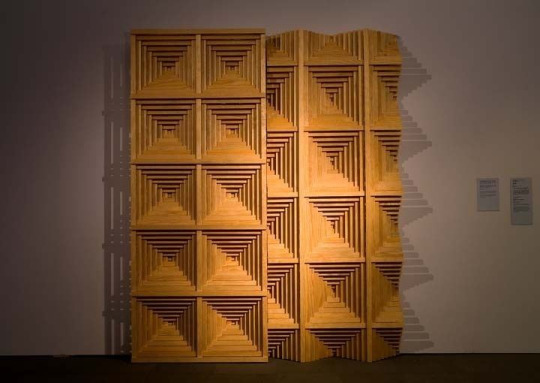
Filipe Tohi has always insisted that lalava offer a way of preserving and communicating information. He describes lalava as a ‘visual language’ that can convey ‘principles of cultural knowledge and history’ as well as ‘memories and experiences’. It has not always been easy, though, for audiences to access all of the information encoded in Tohi’s lalava. The patterns of his sculptures and drawings often seem to connote rather than denote - they remind us, with their artful arrangement of lines, of the seas and landscapes Tonga, but they do not obviously communicate specific information.
Weaving
https://artsandculture.google.com/exhibit/inspired-crafts-of-samoa-ichcap/WAJCX9ba-dwMLQ?hl=en

Architecture of Atmosphere by Mark Wigely
In the text “The Architecture of Atmosphere” Mark Wigley talks about the importance of atmosphere in the architecture industry and what atmosphere really construct in a design. “Likewise, the atmosphere of a building seems to be produced by the physical form” The atmosphere is something that brings life into a space or a place. In the beginning of the text, Mark Wigley indicate the fact that the atmosphere of a building is by all accounts delivered by the physical form. The physical form helps to create the atmosphere around a space or a place. Atmosphere alluding to the sensorial characteristics of a space, it insinuates a prompt type of physical discernment, and is perceived through our enthusiastic sensibility. Actually, the atmosphere in a given space or inside is particularly controlled by the way a space is utilized and our discernment of the space is to huge degree likewise what we encounter. In this semester, we were given a site that is based in Glen Innes for our project assignments. The site was Omaru River. Omaru River is waterway in Glen Innes that is now one of the most polluted river in New Zealand. When we went to visit the site, the atmosphere from this waterway was different from the others, because Omaru River is now one of the most polluted waterway in New Zealand, the atmosphere change. The smell of the site was unpleasant. A fresh air brings life into a place, it also compose a space to be alive, and because the smell or the air around Omaru River was muck, the place became dead and lifeless.
Site Analysis


Auckland City has many different ethnic or national cultures mingling freely. It can also refer to political or social policies which support or encourage such a coexistence. Important in this is the idea that cultural practices, no matter how unusual, should be tolerated as a measure of respect. I wanted to highlight different cultures on my sit analysis, each colour represent different cultures moving around the city.

Design Concept
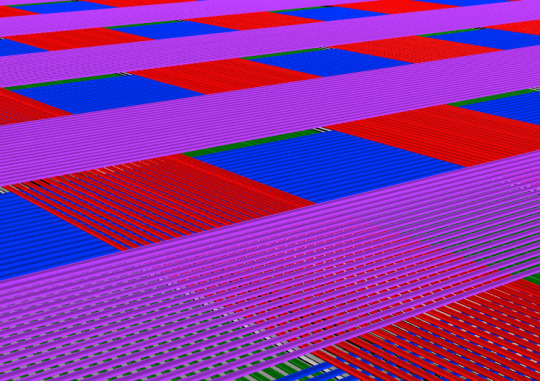
Research Context
“We understand colour in much the same way that we understand the shape of the earth. The earth is round, but we experience it as flat, and act on it according to that practical perception of flatness. Color is light alone, but it is experienced so directly and powerfully that we think of it as a physical entity. No matter what we may understand about the science of color, or what color technology is available, we believe our eyes. Color problems in the design industries are solved with the human eye. Designers work with color from the evidence of their eyes”. (Holtzshue, 2012)
Holtzshue describes how we experience colour in our everyday life. Colour is a tangible observation, and as any tactile discernment, it has impacts that are representative, cooperative, synesthetic, and passionate. This undeniable rationale has been demonstrated by logical examination. Since the body and brain are one element, neuropsychological viewpoints, psychosomatic impacts, visual ergonomics, and colours mental impacts are the parts of shading ergonomics. These being outline objective contemplations that interest adherence to secure human mental and physiological prosperity inside their man-made condition. The colour specifier/creator has the assignment of knowing how the gathering of visual incitement, its preparing and evoked reactions related to the hormonal framework, delivers the best potential outcomes for the welfare of individuals. This is of most extreme significance in differed conditions, for example, restorative and mental offices, workplaces, modern and creation plants, instructive offices, homes for the elderly, remedial offices, et cetera. Each inside themselves having distinctive assignment and capacity territories. Colour plays an important role in our everyday life, I mean colours has numerous impacts in our regular day to day existences. We have figured out how to react to specific hues in certain ways. For instance, red implies alert/blood/ stop.
Holtzshue describe colour as light (Holtzshue, 2012). The connection among light and architecture happens unavoidably. Light, contingent upon how it is utilized and how it can change the spatial setting. It can influence a space to appear to be wonderful or unpalatable, light likewise plays with scale or it could be utilized basically to feature components inside a space. In my experience with light and colour, these two components gives life to a space nor a place, it makes places more pleasant, agreeable, inhabitable and noticeable. Peter Zumthor in his book called Atmosphere, he mention that
“the light on things, is so moving to me that I feel it almost spiritual quality. When the sun comes up in the morning- which I always find so marvellous, absolutely fantastic the way way it comes back every morning – and casts its light on things, it doesn’t feel as if it quite belongs in this world.” (Zumthor, 2006)
Zumthor addresses the idea of light or colour and how it impacts us in our regular day to day existence. Light or colour helps makes that magnificent climate inside a space. Zumthor utilizes the daylight early in the day for instance of light that gives us life. At the point when that sun comes up in the morning, when I open the curtains and the light from the sun hits my face, that lights brings euphoria and fervour. It brings new life, new day and new me. We've all experience some tough occasions previously we go to bed however when we wake up and that sun ascends once more, it implies it's another day, disregard what happened yesterday and proceed onward.
Alnasser also mention that there are various perspectives in characterizing hues and their developments. The physicist characterizes colour to be not just a property of things, of surfaces, or spaces, yet additionally that inclination realized by specific sorts of light that can be seen and deciphered by the brain(Alnasser,2013). In addition, Alnasser highlighted the importance of colour and light to the human eye and how we experience it. Colour has the intensity of communicating sentiments and feelings.
Fort Lane at Night time
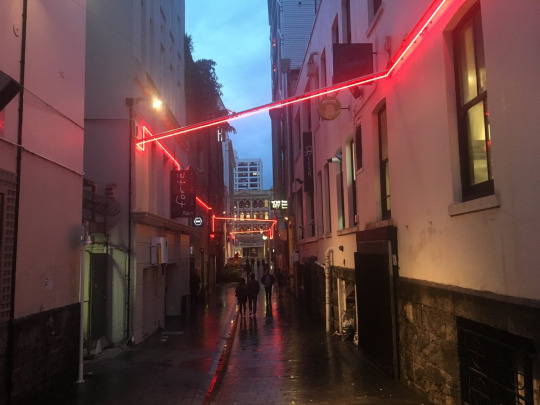

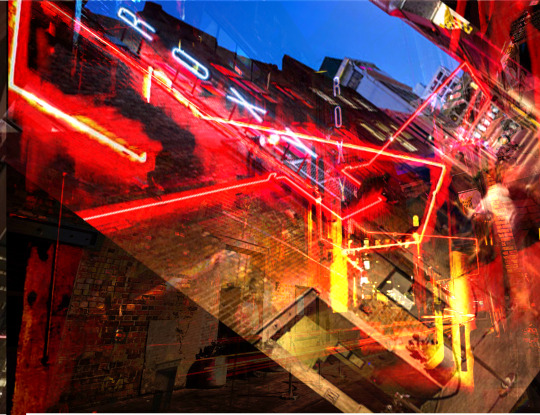
Experimental Design


Rough Design context (Walkway)
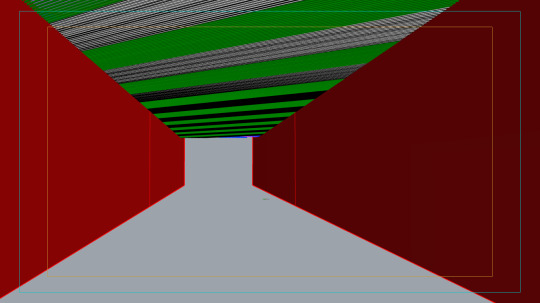




Renders
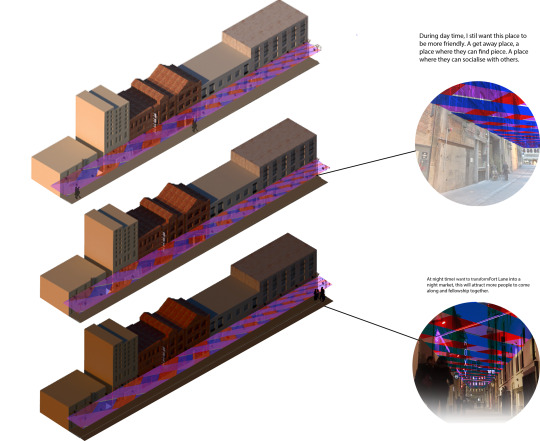

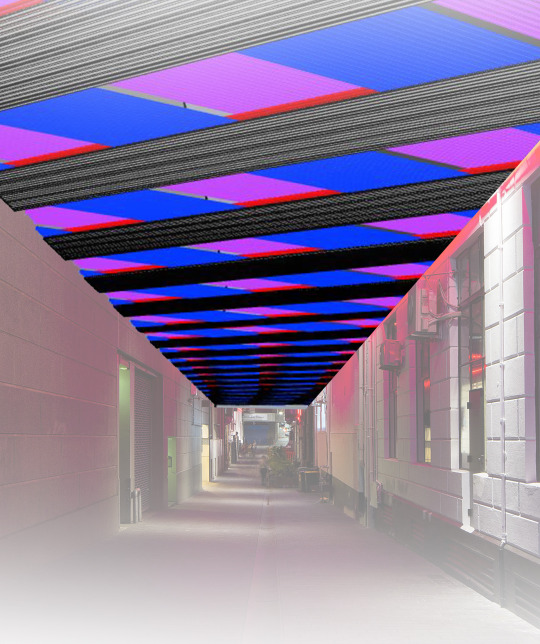
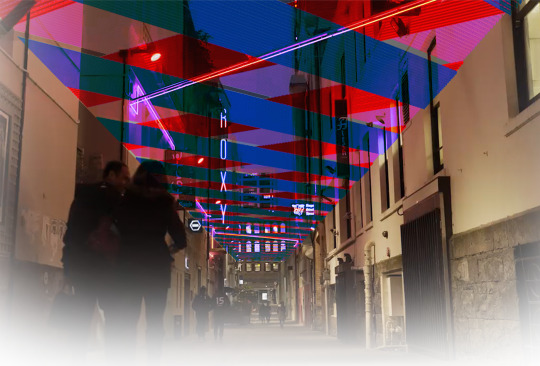
1 note
·
View note
Text
Women in Amerindian Literature: an essay by Elisa Taber
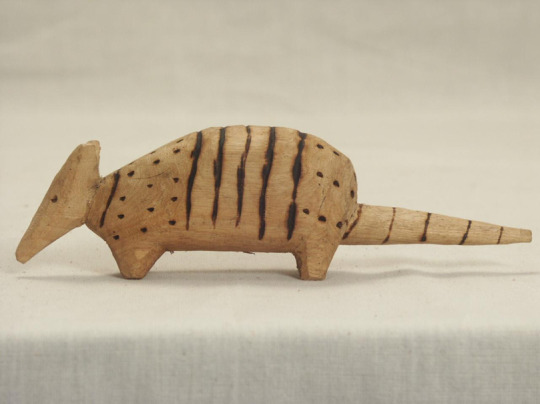
(Image: armadillo carving, a handicraft of the Mbya Guaraní, the indigenous community the poet Alba Eiragi Duarte belongs to.)
Women writing in indigenous languages in Latin America are working to both decolonize hegemonic feminism and to counter systematic linguistic censorship. Their poetic discourse posits that women’s rights do not need to be individualistic but communal and that national identity needs to be multicultural. It is not why but how they write, and the range of languages they use, that makes their writings impossible to group together under the label “indigenous literature.” The Mixe writer and linguist Yasnaya Elena Aguilar Gil has rejected the standard binary imposed on literary production in indigenous languages in Mexico, “I have yet to find a common trait that justifies that a literature written in such distinct languages and that belongs to eleven disparate linguistic families shares any grammatical features or poetic devices that, together, can be contrasted to Spanish.” (“(Is There) An Indigenous Literature?”) The distinctiveness of each indigenous language and culture must be respected and the conception of a ‘minority’ literary category that homogenizes them must be questioned.
Those eager to discover linguistic, cosmological, and poetic diversity should read the work of the following contemporary women writers: Natalia Toledo and Irma Pineda, Zapotec poets; Ruperta Bautista Vázquez and Marga Beatriz Aguilar Montejo, Maya Tsotsil and Maya Yucatec poets, respectively; Liliana Ancalao and Faumelisa Manquepillán, Mapuche poets; Lucila Lema Otavalo and Eugenia Carlos Ríos, Quechua poets; Alba Eiragi Duarte and Susy Delgado, Mbya Guaraní and Jopara poets, respectively.
The community of Latin American writers and academics studying Amerindian poetry–especially Violeta Percia and Juan G. Sánchez Martínez–have generously shared with me the work of these contemporary women writers. I encourage readers to visit Sánchez Martínez’s multilingual digital collaborative anthology platform, Siwar Mayu. The digital nature of this anthology shows that, as Walter Ong posits, it is electronic, rather than print, media that makes visible the transgressions writing inflects on transcribed orality. The auditory and visual performance components of oral literature are rendered through multimedia; i.e. the translated text is accompanied by recordings and illustrations. A lyrical, fictional, or non-fictional piece is published in the original indigenous language as well as in Spanish and English, together with an illustration by an indigenous artist and an essay by an indigenous academic reflecting on the work’s literary value. The result, which is not simply the transcription but the multi-sequential and multisensory translation of oral literature, calls forth a secondary orality.
The poetry of these Zapotec, Maya, Mapuche, Quechua, and Guaraní poets present distinct modes of production, lyrical devices, and linguistic features that are jointly defiant of their Western counterparts. Their collections live between Spanish and an endangered indigenous language. They are crafted and distributed orally; transcription is a secondary and sometimes unnecessary step. Many are self-published in print or online, via social media. Language loses its weight this way; it becomes ephemeral, alterable, it ceases to belong to one person. However, the content is firmly rooted in the soil, sometimes focused on the quotidian–specifically, the act of boiling a potato–and other times on the metaphysical– specifically, the distance between life and death bridged by another conception of corporeality within time and space. I believe this poetry is excluded from the national canon of each country these poets belong to precisely because there is so much complexity encrypted in its apparent simplicity.
In this post I will introduce the poetry of the Paraguayan poet, Alba Eiragi Duarte, who writes in Mbya Guaraní (which is distinct from Jopara, a variant of Spanish-inflected Guaraní) and will discuss how her work is excluded by a definition of national literature so narrow that it has no place for indigenous poetries. Eiragi Duarte has introduced, illustrated, and self-published her collection Ñe'ẽ yvoty, ñe'e poty (Our Earth and Our Mother), writing bilingually in Spanish and Mbya Guaraní. The first section consists of sixteen of her own poems. The language and content are simple. The poems address ontological subjects: what it takes to survive, to cook, sleep, and work. Or what it means to be alive: the passing of the seasons, the transition from dawn to dusk, the birth and death of loved ones. The lines are short but read as sentences, almost like instructions. The language is formal and distant until speech erupts, In “Pore’ỹ” (The Absence), the third person narration shifts to the first with the lines
Che kérape rohecha,
che páype rohechase
che membymi porãite
I see you in my dreams and
when I wake, I wish to see you,
my daughter, my life.
Emotion is unmediated yet counters nostalgia with a sense of what is real now: her daughter is deceased and the narrator, alive. There is nothing mythical about these poems, if myth is defined as the attribution of human intentionality to the inexplicable or meaningless.
In her last poem, “Che Rata” (My Fire), day dawns, the narrator lights a fire and sets a sweet potato, a mandioca, and a kettle atop it. The poem ends with the lines, “che rata ikatupyry, / ombojy ha’uva’erã” (fire is vital, / it cooks food). Life appears to be as simple as waking. Regaining this clarity is a task that is as complex for the reader as it is for the author. The poet refuses to be distracted by the superfluous and encourages the reader to do the same. Alba Eiragi Duarte is, above all, an ethical poet. There is a circularity in each text that is intrinsic to the author’s conception of life and poetry: what is simple is complex and what is complex is simple. She has no need to resort to complex metafictional device to underscore this paradox.
In the second section, titled “Mombe’u añeteguaite Avá Ruguái rehegua” (The True Story of Avá Ruguái), Eiragi Duarte retells a religious myth. (In Guaraní Avá means man and ruguái, armadillo.) Avá Ruguái is like a man, but is more solitary, agile, and cruel. When men hunting in the jungle enter too deep to return before nightfall, he puts them to sleep and kills, quarters, and skins them. The poet recounts the story of the man who kills Avá Ruguái because Ruguái has killed his brother. In one scene, the narrator squats in the scrubland, watching Avá Ruguái lift his sleeping brother by the nape of his neck. There is something cinematic about the specificity with which corporeality in space is described. Time is ambiguous but the events that are recounted seem to occur in the span of one night.
The wilderness—its flora and fauna—is heightened by the descriptions and accompanying illustrations. It is as though the quebracho and palm trees witness the events as the readers do. Behind a low stand of thorn bushes, a man lies stiffly on the ground. The tips of his feet point right. He wears a dark shirt and light pants. His silhouette is delineated by the darkest line in the drawing. His eyes and mouth are lightly sketched, they fade into the white paper. He grips his hand over his abdomen. He seems dead, not asleep. Another man stands over him with a bow in his hands and a sack full of arrows on his back. Palm trees lean left and right in the background. The rigidity and lack of expression of the human figures is in stark contrast to the ornamentation and movement of the bushes and trees. The book’s illustrations underscore people’s inflexibility towards the elements of nature, which in turn adapt to them. The narrative shows the retribution of nature, embodied by Avá Ruguái, to the transgressions of humans.
Eiragi Duarte recites these poems and stories, transcribed on illustrated placards, to children in rural schools across Paraguay. This educational program counters the loss of knowledge of the Mbya Guaraní language and of sacred narratives. She comes from an oral or mnemonic tradition in which authorship is not individual but communal. The poet compensates for the transgressions writing inflects on transcribed orality by combining her poetry with stories that have been passed down to her and by illustrating both on the placards.
She aspires to create a national Paraguayan literature that is multilingual and multicultural. Yet her poetry is intrinsically untranslatable unless the conception of literature broadens to include her manifesto of social ecology. In the introduction to the book she not only posits an equality between genders but also between human beings and nature. By conceiving of human rights and authorship in a communal sense, and at the same time blurring the distinction between the social and ecological, she forces readers to regard the parts of a whole as distinct yet interconnected in new ways. Behind the apparent simplicity of these poems and stories lies a true reconception of reality and how it is rendered in fiction and poetry.
The term literature must be challenged because it reduces these verbally organized materials to a variant further developed by literate cultures. With respect to sacred narratives, the term authorship must shift from an individual to a communal definition. The narratives do not belong to the ones reciting them—they only author a version—but rather to the millenary indigenous cultures the reciters belong to. The history of the transcription and translation into Spanish of poetry from indigenous languages since the conquest has three stages. The first was carried out by missionaries; the second, by social scientists, specifically linguists and anthropologists; and the third, by writers.
I have featured the work of Alba Eiragi Duarte in this post because it speaks to the literary properties of the text, rather than exclusively to its cultural or linguistic aspects. She shows that the culture or language is not so much in danger of extinction as it is at risk of voluntarily subjugating itself through national aspirations to westernization. She also proposes that her translations are parallel versions of the original. It is only by challenging the terms “literature and authorship” that the national as well as the continental canon will be broadened to include indigenous poetry. Failing that, its lyrics will continue to circulate orally as common knowledge, but without validation as artistic works in their own right, not folkloric artifacts.
—Elisa Taber
Works Cited
Aguilar Gil, Yasnaya Elena. “(Is There) an Indigenous Literature?” Translated by Gloria E. Chacón. Diálogo, vol. 19, no. 1, Spring 2016, pp. 157-159. (Original article in Spanish published in March 2015 in Letras libres (https://www.letraslibres.com/mexico-espana/libros/literatura-indigena).
#Yasnaya Elena Aguilar Gil#indigenous languages#mixe#Siwar Mayu#zapotec#maya#mapuche#quechua#guaraní#womenintranslation#elisa taber#Alba Eiragi Duarte
7 notes
·
View notes
Text
Writing Initiative #1
1. Describe 1–2 media and/or materials you would like to explore
As I am initiating my 4D project (mobile application), I would like to explore different app prototyping tools such as AdobeXD, Sketch or Figma. This is essential to executing my app idea as it helps me understand how to translate my low-fidelity wireframe sketches to high-fidelity digital wireframes that would later perform as a working prototype.
2. Explain whether/how these reflect what you have learned about the word.
The word Mnemonic is described as:
“A mnemonic device, or memory device, is any learning technique that aids information retention or retrieval in the human memory. Mnemonics make use of elaborative encoding, retrieval cues, and imagery as specific tools to encode any given information in a way that allows for efficient storage and retrieval.”
I believe that my 4D mobile application project is the epitome of this definition as it would be a wayfinding app that would aid early-onset Alzhimer’s patients to correlate certain objects & subjects to the space they are in to stimulate their brain/thinking; It may not be a preventive solution to Alzhimer’s, but it would help patients develop a technique that could help in the aspect of spatial orientation.
1 note
·
View note
Text
My opinion: old school and really Wiccan. I liked the sentiment at one point and wish there was a little goodbye that was just ours, and maybe some witchy youtubers sign off might turn into that one day. The mote it was the way I ended my spells, to kind of seal it, when I was a newbie. Now it's like a mnemonic device for me unfortunately and still taps into the part of my brain when I don't think a spell has been sealed and ready to be delivered. I think I'll try some chaos magick to undo that tie on my brain, maybe replace it, but that'll take work and discipline.
So I guess what I'm saying is, whatever you use, don't get attached maybe? Or maybe be careful what habits you develop because they tend to stick with your practice even when you've decided you don't want it anymore.
uh calling more experienced witches… thoughts on using ‘so mote it be’ and ‘blessed be’?
119 notes
·
View notes
Text
Struggling with math? Find a reliable and experienced math tutor near you to boost your understanding and confidence
Are you struggling with math and struggling to keep up with your classes? Whether it's algebra, geometry, calculus, or any other branch of mathematics, feeling overwhelmed by math is a common experience for many students. The good news is that there is a reliable solution to help you boost your understanding and confidence in math – finding a reliable and experienced math tutor near me.
Finding the best math tutoring can make all the difference in your math journey. From after-school math classes to personalized one-on-one tutoring, various options are available to suit your learning style and schedule. If you're based in Sharjah, you're in luck because there are plenty of qualified math tutors in Sharjah who can provide the support and guidance you need to excel in math.
One of the key benefits of seeking out a math tutor near you is the personalized attention and tailored approach to learning. Unlike a busy classroom setting where the teacher's time is divided among many students, a math tutor can focus solely on your individual needs. This allows for a deeper understanding of the concepts, targeted practice, and the opportunity to ask questions without hesitation.
Moreover, the best math tutoring goes beyond just helping you with homework or exam preparation. A committed math tutor will collaborate with you to determine your areas of strength and weakness, focus on those that require development, and create a personalized learning plan to address those areas. This personalized approach can significantly boost your understanding of mathematical concepts and improve your grades.
Whether you're struggling with basic arithmetic or advanced calculus, a skilled math tutor can provide the clarity and guidance you need to overcome your challenges. They can simplify and make difficult ideas easier to understand and apply by breaking them down into smaller, more doable steps. A math tutor can also offer valuable tips, tricks, and mnemonic devices to help you remember key formulas and principles more effectively.
For many students, seeking help outside of the classroom can be intimidating. On the other hand, locating a trustworthy maths tutor in your area can significantly impact your academic performance. Your confidence and attitude will both increase and your maths skills will improve with the help of the right maths tutor. Overcoming your arithmetic difficulties can provide you a newfound sense of empowerment and enthusiasm for learning.
When searching for a math tutor in Sharjah, it's essential to consider the qualifications and experience of potential tutors. Seek out tutors who have a proven track record of assisting students in developing their maths skills, a strong background in mathematics, and relevant teaching experience. You can also look into internet resources that pair students with experienced tutors, or ask friends, family, or teachers for recommendations.
In conclusion, if you struggle with math, don't hesitate to seek the best math tutoring available. Whether through after-school math classes or personalized one-on-one sessions, finding a reliable and experienced math tutor near you can help boost your understanding and confidence in math. With the right support and guidance, you can overcome your math struggles and unlock your full potential in this critical subject.
#math test prep in dubai#math lessons in sharjah#after-school math help#sat math help in uae#math help in uae#math tutor abu dhabi
0 notes
Text
WJM FOR INVINCIBILITY

2018/07/18 Invincibility: First Night ANY MARTA ZAPPAROLI WJM Loophole Berlin - DE
Wednesday, July 18 - 2018 h: 8:00 PM Loophole Boddinstrasse 60, 12053 Berlin Invincibility First Night ANY MARTA ZAPPAROLI WJM Details // English Six exclusive commissioned works to be performed live by the artists on the two nights of July 18th and 19th. Invincibility represents an ancient dream, a point of freedom from being vulnerable; but simultaneously, it is a mark of and absolute ruler. Between these two poles there’s a horizon of cultural, political and personal associations. "Invincibility” is an event of the "Pop-Kultur Lokal" series, supported by the Senate Department for Culture and Europe of Berlin and with funds of the European Regional Development Fund (ERDF). Pop-Kultur Berlin http://www.pop-kultur.berlin/en/ ANY (angela nina yeowell) spies on the subconscious and transmits the resulting data through voice and electronics. She is interested in where noise meets music, where un-rhythm meets accuracy and where raw meets craft. She predominantly plays in her duo Slow Slow Loris. https://soundcloud.com/angelanina http://www.slowslowloris.com/ https://www.facebook.com/slowslowloris/ Marta Zapparoli is an active experimental sound artist, improviser, performer, self-taught researcher . She works and lives in Berlin since 2007. In the past fourteen years her sonic work is focused on self recorded sound from the external world using a wide of devices, microphones, sensors, ultrasonic, digital and analogue recorders and in the past four years also antennas, radio receivers, detectors, with out borders and many unconventional techniques . She is interested on the boundaries and relations between acoustic ecology, electro-smog (radio waves),EMF, natural radio phenomenas, wireless communication. With all the recordings she capture around the world, she builds strongly narrative and imaginative sonic pieces through live improvisation with real-time tape manipulation. Beside her solo project she has extensive active duos and larger group collaborations include the Berlin’s 24-piece Splitter Orchester, Pareidolia with (Liz Allbee), The Elks (Fagaschinski, Roisz, Allbee), CIRCUIT TRAINING assemble, Fahrstuhl with (Burkhard Beins), Duo with (Greta Christensen). She has played with many regarded musicians and bands and performed throughout the EU as well as Turkey, Norway, Sweden, Switzerland, UK and the USA in festivals such as Maerzmusik, Atonal, A’LARM, Fusion, Darmstädt, Sincussion, (Germany), Huddersfield, Sonorities (UK), Borealis (Norway), Crack (France), Sonic Circuit , High Zero (USA), Geiger (Sweden) and many more. She has been an artist in Residence at EMS (Sweden), AIR (Austria), AIR (Lithuania). http://martazapparoli.blogspot.de/ http://soundcloud.com/martazapparoli WJM Roberta WJM Andreucci is a percussionist, an experimental producer and DJ, and on air personality. She has more than twenty year of experience organizing and promoting alternative music events. She practices plagiarism and the cutting and mixing of musical and ambiental aural sources. Early in her career she started focusing on the use of voices and on vocal metalinguism, focalizing on her personal practice of “cuttingandslicing” and on rhythm patterns obtained through an improper use of her tools of the trade (cdjs, cd player, md, me mixer). Through the years her percussion set morphed into a hybrid encompassing a dj booth, a radio dj one, a microphone station for electroacustic experiments, and a mnemonic butcher’s slab. She is a founding member of performing music units such as Jealousy Party, Semerssuaq, The Secretaries and Sistemi Audiofobici Burp. She is the director of the music label Burp Publications. https://soundcloud.com/roberta-wjm-andreucci Details // German Sechs vom Loophole Berlin in Auftrag gegebene exklusive Werke, die am 18. und 19. Juli von den Künstlerinnen live präsentiert werden. "Invincibility" steht im Englischen für Unbesiegbarkeit, einen uralten Traum, der davon handelt, nicht länger verwundbar und verletzlich sein zu müssen. Zugleich markiert Unbesiegbarkeit absolute Herrschaft. Zwischen diesen Bedeutungszentren öffnet sich ein assoziativer Spielraum, der ins Kulturelle, Private und Politische greift. Invicibility ist eine Veranstaltung im Rahmen von Pop-Kultur Lokal, gefördert durch die Senatsverwaltung für Kultur und Europa des Landes Berlin aus Mitteln des Europäische Fonds für Regionale Entwicklung (EFRE) im Programm "Stärkung des Innovationsportals in der Kultur II (INP II)..." Pop-Kultur Berlin http://www.pop-kultur.berlin/en/ Artwork by Maria Mendes http://mariabarbedomendes.tumblr.com/ https://www.instagram.com/maria______mendes/
fb event
1 note
·
View note
Text
Device
1 : something devised or contrived: such as. a(1) : plan, procedure, technique a marketing device mnemonic devices. (2) : a scheme to deceive : stratagem, trick. b : something fanciful, elaborate, or intricate in design
The noun device comes from the Old French word devis, meaning “division,” “separation,” “wish,” or “desire.” That original meaning is only retained in the expression “left to your own devices,” meaning "you're on your own." Otherwise, devices are things that perform a specific function, like tools, instruments or ...
Device de vice devic e dev ice
Writing the word device
The device im writing with right now an electronic device how i cant live without devices like my phone like my iPad i live on them all day long people are even dying on these things with selfies falling off cliffs and so on but if it wasn’t this it was newspapers im sure many have died not paying attention to whats going on.
Reading the word device
To device a way to do something this is where im not very good but chris is good at this he thinks of ideas a device to help I think how did he think of that why couldn’t my mind think of something like that i want my mind to think of things like that thoughts of not being good enough comes up.
My friends the old fellas always have great ideas and devices for me to us i really want to be able to think like them create like them.
When they device a plan to get a car over a river i think it was in the car program top gear it was like all minds got together to get over a river with there cars so very interesting on how they work it out how a mind can work this stuff out its amazing to me that some have the intelligence to do such things.
Im only now developing my device the mind with common sense of having solutions before i would just get angry upset and not want to see solutions for things it was all to hard to do and i didnt like the solutions but now i do i want the best solutions it’s a working process but im building on it.
The dogger a device to get your tyres off cars.
Saying device out loud
Something to help you do something that pacific like saw hammer nails it might be small but its still a device to help you build or you can then do to a crane a Lorry truck combine harvester all deceives we use.
Sf
Does this definition support me no i see i have a belief im not good enough within this word that i cant think of a way to device something or a device to help create something i see i makes myself as not being good enough here to do this and see others as better than me.
Device de cife
Device
To device a way to do something like to device a way to help myself with living words ask for help build up a board to help me plan out how im goin to do this
Something that helps you do something like the boards for my living words again lol
I will live this word with creating my creative mind and building things to help me with process or something i just want to create that i can do i have the ideas i just need ot put them into plan.
0 notes